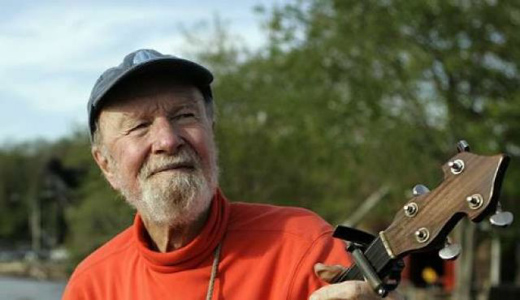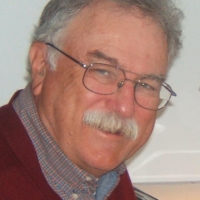
NEW YORK – An exhibit at New York University (NYU) highlights the role of the Communist Party USA (CPUSA) and the broader left in the renaissance of folk music and American popular music in general during the 1930s and beyond.
“Left Protest Music in the Tamiment Library & Wagner Labor Archives,” in the lobby of NYU’s Bobst Library, includes songbooks, sheet music, posters, and photographs drawn from the archives of the Tamiment Library at NYU. Librarian Kate Donovan assembled the exhibit in great part from photos, papers, posters, and other artifacts permanently donated by the CPUSA and People’s World as an archive of primary sources for future historians and researchers.
An explanatory text beside one display is headlined, “People’s Songs: Folk Music and the Left.” It continues, “As the left and the Communist Party turned their attention to music for working people, they also began rediscovering traditional American folk music.”
The text cites the role of father-son team John and Alan Lomax in crisscrossing the nation to record on primitive machines folk songs as sung by Huddie Ledbetter (Leadbelly) and other undiscovered singers and musicians.
Among the photos are portraits of Leadbelly, Woody Guthrie, Pete Seeger, the Weavers and the Almanac Singers. A songbook by Malvina Reynolds is displayed. And there are copies of the folk song magazine “Sing Out.”
The text continues, “In part due to the social and economic crisis wrought by the Great Depression, the Communist Party emerged as a leading political voice on labor and social justice in the 1930s and 1940s.
“By the late 1930s, the Party had a wide following in many segments of American life, notably among labor unions, intellectuals, and artists.” The Party exerted a strong influence on culture and “used music as a means of expressing their revolutionary politics,” the text adds. The goal for many “was to create ‘proletarian art’ that would support labor and worker’s struggles.”
Songs during the “Popular Front” era were “intended to foster social change with lyrics that promoted unions, decried the exploitation of working class people and advocated egalitarianism.”
One case, “No Pasarán: Songs of the Spanish Civil War 1936-1939,” is devoted to the folk songs and music sung in support of the 2,800 or more Abraham Lincoln Brigade volunteers from the U.S. who fought and died in Spain fighting Franco fascism.
“Left music did not confine itself to rallies and picketlines but extended into all parts of American life including the theater,” explains the text on an adjoining display case. “Anti-racism was a prevalent theme of the Left theater of the period.”
One musical of the period, Sing for Your Supper, produced by the WPA Federal Theatre Project (FTP) in 1939, included the 11-minute “Ballad for Americans,” with music by Earl Robinson and lyrics by John Latouche. Republicans in Congress killed the FTP, but as later performed by Paul Robeson on radio and on a best-selling 78 rpm recording, the cantata became a nationwide hit. Donovan writes that the “Ballad” “promoted a new vision of American muliculturalism with the lines, ‘Are you an American? I’m just an Irish, Negro, Jewish, Italian, French and English, Spanish, Russian, Chinese, Polish, Scotch, Hungarian, Litvak, Swedish, Finnish, Canadian, Greek and Turk and Czech and double-Czech American.” (Labor choruses have altered that line often, adding nationalities like “Mexican,” “Native American Indian,” and religions – “Muslim,” for example.)
“Ballad for Americans” became so popular that it was featured at the 1940 national conventions of both the CPUSA and the Republican Party. In Ballad of an American: The Autobiography of Earl Robinson, co-written with Eric A. Gordon, the composer tells of the interview with him and John Latouche that the New Yorker magazine conducted about this curious turn of events. “We wrote the ‘Ballad for Americans’ for everybody, not only Republicans,” said Latouche. “Especially not only Republicans,” added Robinson, who was a CPUSA member in those years.
“The House I Live In,” by Robinson and Lewis Allan (pen name of Abel Meeropol), was another runaway Popular Front hit song, performed by Frank Sinatra, Bing Crosby, and many other singers. Meeropol, with his wife Anne, later adopted the two sons of Julius and Ethel Rosenberg after their execution in 1953.
Another display makes clear that the Cold War anti-Communists were determined to crush this cultural re-awakening. HUAC witchhunt hearings led to the blacklisting of many performers like Pete Seeger. Photos of the Klan-like goon squad that attacked concert-goers in Peekskill, N.Y., are featured. These hooligans viciously attacked with rocks and clubs a peaceful crowd assembled to hear Paul Robeson sing.
The attack failed to crush the cultural awakening. The display “Songs for Peace” highlights songs sung by Pete Seeger, Bob Dylan, and John Lennon to protest the war in Vietnam: “Where Have All the Flowers Gone?” “Blowin’ in the Wind” and “Give Peace a Chance”: Millions sang those songs marching to end the Vietnam War.
Another display is devoted to the role of music in the civil rights movement and the women’s liberation movement. A poster publicizes a fundraiser at the Apollo Theater in Harlem to raise money to pay for buses to take protesters to the 1963 March on Washington for Jobs and Freedom.
Curator Donovan quotes a line from a widely known song demanding equality for women: “We’re breaking out of our cage of ruffles and rage/ It’s time to spell our own names; we’re people not dames.”
The exhibit is on view for probably a couple more months, but there is no set closing date at this time. The library is located at 70 Washington Square South, New York 10012.
Photo: Pete Seeger | AP

MOST POPULAR TODAY

Zionist organizations leading campaign to stop ceasefire resolutions in D.C. area


High Court essentially bans demonstrations, freedom of assembly in Deep South

Afghanistan’s socialist years: The promising future killed off by U.S. imperialism

Communist Karol Cariola elected president of Chile’s legislature






Comments